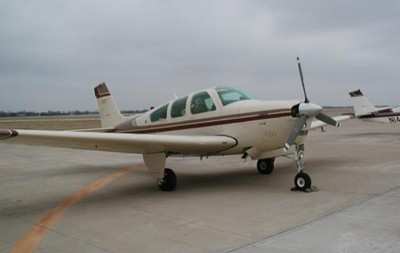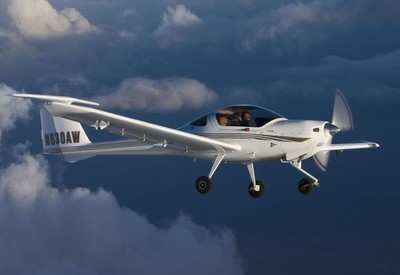Three People Were Fatally Injured In The Accident
The NTSB has released its preliminary report from a midair collision which fatally injured three people at West Georgia Regional Airport (KCTJ) September 7.

On that date at approximately 1047 eastern daylight time, a Beech F33A, N6027K, and a Diamond Aircraft Industries DA20-C1, N85WP, collided in midair on the final approach leg of the traffic pattern to runway 35 KCTJ in Carrollton, Georgia. The Beech was substantially damaged and the private pilot was fatally injured. The Diamond was destroyed and the flight instructor and one student pilot were fatally injured. The Beech was registered to and operated by the private pilot. The Diamond was registered to and operated by Falcon Aviation Academy LLC. Both flights were conducted under the provisions of 14 Code of Federal Regulations Part 91; the Beech pilot was conducting a personal flight to KCTJ and the Diamond pilots were conducting a local, instructional flight. Visual meteorological conditions prevailed, and no flight plans were filed for the Beech or the Diamond. The Beech departed from Fulton County Airport (FTY), Atlanta, Georgia about 1020, and the Diamond departed from Newnan Coweta County
Airport (CCO), Newnan, Georgia about 1000.
According to personnel from Falcon Aviation Academy, the pilots of the Diamond were practicing traffic pattern operations and landings at KCTJ. The Diamond was the first airplane to enter the traffic pattern, followed a few minutes later by N263CF and then by N169PS, both Falcon Academy DA20s. The flight instructor and student pilot on board N263CF observed a Beech Bonanza on the downwind leg of the traffic pattern; however, the Beech pilot did not appear to be broadcasting his intentions on the KCTJ common traffic advisory frequency (CTAF). Moments later, the flight instructor and student pilot on board N169PS entered the traffic pattern from the east. They looked down and to the left, in the direction of the final approach path for runway 35, and observed two airplanes merge, then collide. They also did not hear the pilot of the Beech broadcasting his intentions on the CTAF. All pilots on board both trailing DA20s heard the flight instructor on board the accident Diamond making her position calls in
the traffic pattern prior to the collision, the last call being made on the final approach leg of the traffic pattern.
Initial radar data provided by air traffic control indicated that the pilot of Beech entered an extended downwind from the north, above and directly behind the Diamond, which was also on downwind leg of the traffic pattern. The ground speed of the Beech was about 50 knots greater than the Diamond. The last radar returns, were about 2,000 feet above mean sea level, or about 850 feet above the ground. The locations of the last radar returns were in an area on the downwind leg of the traffic pattern, approaching the base leg of the traffic pattern for runway 35.
Initial examination of the wreckage revealed that both airplanes remained physically attached after the collision until ground impact. The main wreckage of both airplanes came to rest about 408 feet south of the approach end of runway 35, and on the extended centerline of the runway. The wreckage of the Beech was inverted and on top of the Diamond wreckage. Lightweight pieces of the Diamond were found on a northerly path, beginning 340 feet south of the main wreckage. All major structural components of both airplanes were accounted for within the wreckage path boundary. One of the most southerly pieces of wreckage debris was the right half of the Diamond's elevator. Closer examination revealed black transfer markings on the upper surface that were consistent in color and tread pattern with the right main landing gear tire of the Beech. Examination of the Diamond's horizontal stabilizer revealed similar transfer markings on its upper surface. The other small pieces of debris located south of the main
wreckage were identified as sections of the Diamond's canopy and wing root/fuselage skin.

The pilot of the Beech, age 79, held an FAA private pilot certificate with airplane single engine land and instrument airplane ratings. He held a FAA third class medical certificate with a restriction to have glasses available for near vision. He reported 2,500 total hours of flying experience on his medical certificate application that was dated October 5, 2015.
The flight instructor in the Diamond, age 24, held an FAA commercial pilot certificate with ratings for airplane multiengine land, airplane single engine land, and instrument airplane. She was seated in the right cockpit seat. She held a FAA flight instructor certificate with a rating for airplane single engine. She reported 600 total hours of flying experience on her FAA first class medical certificate application that was dated March 16, 2016.
The student pilot in the Diamond, age 20, held an FAA student pilot certificate. He held a FAA second-class medical certificate with no restrictions. He was seated in the left cockpit seat. He enrolled in the ab initio training program at Falcon Aircraft Academy on August 4, 2016, and had logged about 20 hours of flight time.
CTJ was a public, non-towered airport with a single runway, designated 17/35. The runway was 5,503 feet long and 100 feet wide. The published traffic pattern direction for runway 35 was to the left. Falcon Aviation Academy personnel reported that their pilots frequently used CTJ for training purposes. CTAF communications were not recorded.
The wreckage of both airplanes was retained by the NTSB for further examination.
(Images from file. Not accident aircraft)
 Airbus Racer Helicopter Demonstrator First Flight Part of Clean Sky 2 Initiative
Airbus Racer Helicopter Demonstrator First Flight Part of Clean Sky 2 Initiative Diamond's Electric DA40 Finds Fans at Dübendorf
Diamond's Electric DA40 Finds Fans at Dübendorf ANN's Daily Aero-Term (04.23.24): Line Up And Wait (LUAW)
ANN's Daily Aero-Term (04.23.24): Line Up And Wait (LUAW) NTSB Final Report: Extra Flugzeugbau GMBH EA300/L
NTSB Final Report: Extra Flugzeugbau GMBH EA300/L Classic Aero-TV: 'Never Give Up' - Advice From Two of FedEx's Female Captains
Classic Aero-TV: 'Never Give Up' - Advice From Two of FedEx's Female Captains




